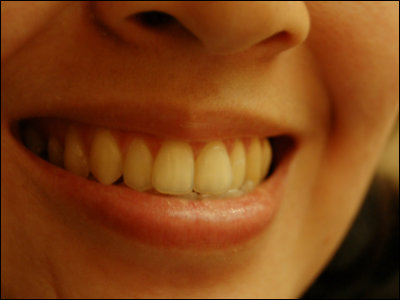The mystery of 'why cold things stain your teeth' is finally unraveled

Many people have experienced sharp pain in their teeth when eating cold foods such as ice cream. It was said that the mechanism of pain
Odontoblast TRPC5 channels signal cold pain in teeth | Science Advances
https://advances.sciencemag.org/content/7/13/eabf5567
Cold Tooth Pain's Mysterious Molecular Culprit --The New York Times
https://www.nytimes.com/2021/03/26/science/tooth-pain-cold.html
How teeth sense the cold --ScienceDaily
https://www.sciencedaily.com/releases/2021/03/210326151348.htm
The surface of the tooth is covered with enamel with a thickness of about 1 mm to 2 mm, and underneath it is the dentin that is the main component of the tooth, and below that is the structure that continues with the so-called 'dental nerve' such as the pulp. I'm taking it. The reason why teeth are hurt by some kind of stimulus , including coldness, is that the flow of tissue fluid in the thin tube 'dentin tubule' in the dentin is changed by an external stimulus, which excites the sensory nerves in the pulp and causes pain. The theory that would occur was influential.

However, until now, the clear principle that supports this theory has not been known, and there were many unclear points.
About 15 years ago, Dr. Catalina Zimmermann, a professor of physiology at the

Ion channels such as TRPC5 are ubiquitous in the human body, and when the corneal ion channels are activated by cold, for example, the eyes become cold and dry. However, it was not known in detail in which part of the body the cold-feeling ion channels such as TRPC5 act.
Dr. Zimmerman's research partner and
To investigate the function of TRPC5 in teeth, Dr. Zimmerman and colleagues have developed a method for measuring neural signals transmitted from damaged molars in mice. We then measured how normal mice and mice modified to block the action of TRPC5 respond to stimuli. In normal mice, TRPC5 worked and nerve signals were recorded when a cold solution like ice touched the teeth, but in mice in which the action of TRPC5 was inhibited, nerve signals were not recorded.
In addition, Dr. Zimmerman and colleagues confirm that TRPC5 is present in the 'odontoblasts' between the dentin and the pulp. Odontoblasts were known to form dentin rather than assisting perception, so it was a surprising discovery for Dr. Zimmerman and others. Dr. Zimmerman and colleagues finally conclude that 'when the cold signal reaches the dentin, TRPC5 is activated and the sensation is transmitted to the brain.'
In addition, Dr. Zimmerman et al. Cited eugenol , which is the main component of clove oil , as one of the substances that inhibit the action of TRPC5. Eugenol is often used as a traditional treatment for toothache. 'Knowledge that TRPC5 causes toothache will help develop better treatments,' said Dr. Zimmerman and colleagues.

Related Posts:
in Science, Posted by log1p_kr







